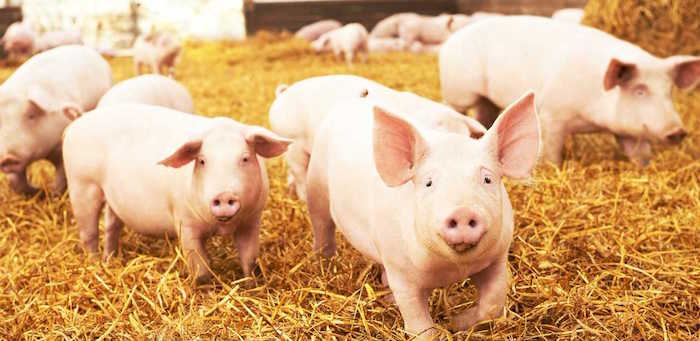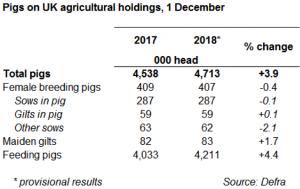This meant the total pig population stood at 4.7 million head, the largest for the time of year since 2006. The increase was supported by a 3% in the English herd, while the Northern Ireland herd increased by 18%. Conversely, the Scottish herd was recorded as 6% lower than year earlier levels.
The rise was driven by growth in the number of fattening pigs, which were also 4% higher than year earlier levels at 4.2 million head. Growth in the feeding herd supports the higher throughputs that have been recorded in the past two months.
In fact, with slaughterings in January and February standing 10% higher than year earlier levels, a greater degree of year-on-year growth in fattening pigs might have been anticipated. However, Defra’s December 2016 census also indicated a 3% increase in the finishing herd, despite slaughterings in subsequent months being consistently lower year-on-year. This suggests the absolute figure for 2016 may have been somewhat overstated.
In contrast, little change was recorded in the UK female breeding herd, when compared with December 2016. The published number stands at 407,000 head, marginally lower than year earlier levels. As substantial decline in Scottish numbers (-6,000 head) counteracted modest growth from the English herd (+1,000 head), and 8% growth (+4,000 head) in Northern Ireland. It may be that, given the downward trend in pig prices in the latter half of the year, uncertainty over the future level of pig prices has limited expansion.
Nonetheless, the June survey also recorded only modest growth in the UK breeding herd. However, given the substantial increase in throughputs recorded so far this year and improvement to producer profitability in 2017, this growth may have been understated. Recorded sow numbers also continued to grow through the period of poor profitability in late 2015 and early 2016, so previously the absolute figures may have been a little high. As such, they should be treated with caution.





